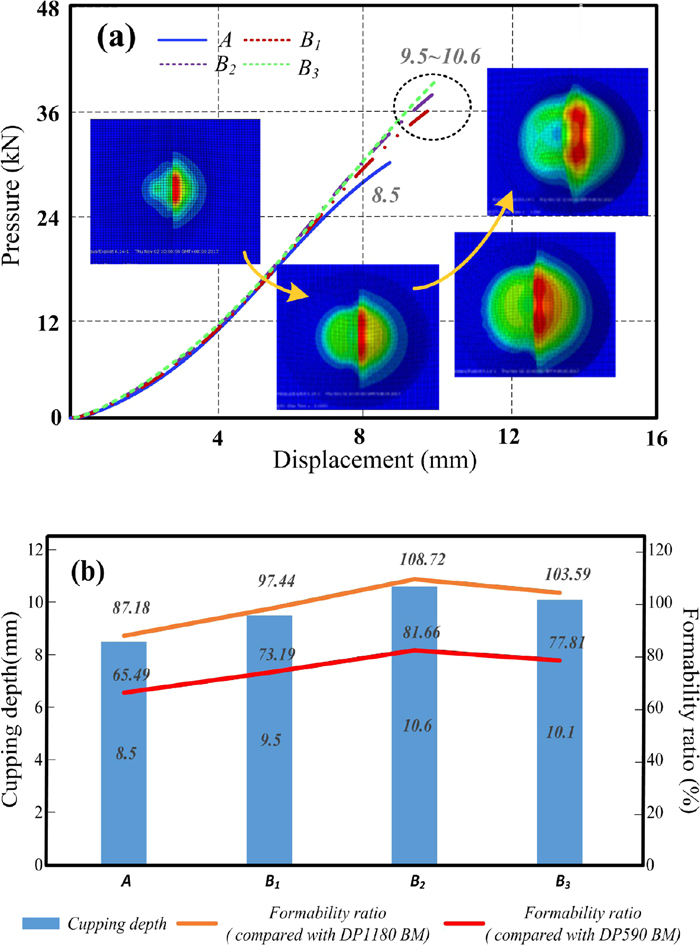Volume 60, Issue 2
Displaying 1-29 of 29 articles from this issue
- |<
- <
- 1
- >
- >|
Publication Data
-
2020 Volume 60 Issue 2 Pages Cover-
Published: February 15, 2020
Released on J-STAGE: February 18, 2020
Download PDF (431K) -
2020 Volume 60 Issue 2 Pages Editorial-
Published: February 15, 2020
Released on J-STAGE: February 18, 2020
Download PDF (1163K) -
2020 Volume 60 Issue 2 Pages Contents-
Published: February 15, 2020
Released on J-STAGE: February 18, 2020
Download PDF (140K)
Regular Articles
Fundamentals of High Temperature Processes
-
Article type: Regular Article
2020 Volume 60 Issue 2 Pages 199-204
Published: February 15, 2020
Released on J-STAGE: February 18, 2020
Advance online publication: October 14, 2019Download PDF (1135K) Full view HTML -
Article type: Regular Article
2020 Volume 60 Issue 2 Pages 205-211
Published: February 15, 2020
Released on J-STAGE: February 18, 2020
Advance online publication: October 03, 2019Download PDF (1212K) Full view HTML -
Article type: Regular Article
2020 Volume 60 Issue 2 Pages 212-219
Published: February 15, 2020
Released on J-STAGE: February 18, 2020
Download PDF (2096K) Full view HTML -
Article type: Regular Article
2020 Volume 60 Issue 2 Pages 220-225
Published: February 15, 2020
Released on J-STAGE: February 18, 2020
Download PDF (1129K) Full view HTML
Ironmaking
-
Article type: Regular Article
2020 Volume 60 Issue 2 Pages 226-232
Published: February 15, 2020
Released on J-STAGE: February 18, 2020
Advance online publication: October 03, 2019Download PDF (1390K) Full view HTML -
Article type: Regular Article
2020 Volume 60 Issue 2 Pages 233-237
Published: February 15, 2020
Released on J-STAGE: February 18, 2020
Download PDF (1226K) Full view HTML
Steelmaking
-
Article type: Regular Article
2020 Volume 60 Issue 2 Pages 238-246
Published: February 15, 2020
Released on J-STAGE: February 18, 2020
Advance online publication: October 11, 2019Download PDF (1180K) Full view HTML -
Article type: Regular Article
2020 Volume 60 Issue 2 Pages 247-257
Published: February 15, 2020
Released on J-STAGE: February 18, 2020
Advance online publication: October 18, 2019Download PDF (1730K) Full view HTML
Casting and Solidification
-
Article type: Regular Article
2020 Volume 60 Issue 2 Pages 258-266
Published: February 15, 2020
Released on J-STAGE: February 18, 2020
Download PDF (2647K) Full view HTML -
Article type: Regular Article
2020 Volume 60 Issue 2 Pages 267-275
Published: February 15, 2020
Released on J-STAGE: February 18, 2020
Download PDF (2781K) Full view HTML -
Article type: Regular Article
2020 Volume 60 Issue 2 Pages 276-285
Published: February 15, 2020
Released on J-STAGE: February 18, 2020
Download PDF (1329K) Full view HTML
Instrumentation, Control and System Engineering
-
Article type: Regular Article
2020 Volume 60 Issue 2 Pages 286-296
Published: February 15, 2020
Released on J-STAGE: February 18, 2020
Advance online publication: October 14, 2019Download PDF (2445K) Full view HTML -
Article type: Regular Article
2020 Volume 60 Issue 2 Pages 297-307
Published: February 15, 2020
Released on J-STAGE: February 18, 2020
Advance online publication: October 11, 2019Download PDF (813K) Full view HTML
Forming Processing and Thermomechanical Treatment
-
Article type: Regular Article
2020 Volume 60 Issue 2 Pages 308-317
Published: February 15, 2020
Released on J-STAGE: February 18, 2020
Advance online publication: October 19, 2019Download PDF (1367K) Full view HTML -
Article type: Regular Article
2020 Volume 60 Issue 2 Pages 318-323
Published: February 15, 2020
Released on J-STAGE: February 18, 2020
Advance online publication: October 11, 2019Download PDF (505K) Full view HTML
Welding and Joining
-
Article type: Regular Article
2020 Volume 60 Issue 2 Pages 324-329
Published: February 15, 2020
Released on J-STAGE: February 18, 2020
Advance online publication: November 25, 2019Download PDF (1091K) Full view HTML -
Article type: Regular Article
2020 Volume 60 Issue 2 Pages 330-336
Published: February 15, 2020
Released on J-STAGE: February 18, 2020
Download PDF (2596K) Full view HTML
Surface Treatment and Corrosion
-
Article type: Regular Article
2020 Volume 60 Issue 2 Pages 337-345
Published: February 15, 2020
Released on J-STAGE: February 18, 2020
Download PDF (2338K) Full view HTML
Transformations and Microstructures
-
Article type: Regular Article
2020 Volume 60 Issue 2 Pages 346-351
Published: February 15, 2020
Released on J-STAGE: February 18, 2020
Download PDF (866K) Full view HTML -
Article type: Regular Article
2020 Volume 60 Issue 2 Pages 352-358
Published: February 15, 2020
Released on J-STAGE: February 18, 2020
Advance online publication: October 03, 2019Download PDF (1888K) Full view HTML -
Article type: Regular Article
2020 Volume 60 Issue 2 Pages 359-368
Published: February 15, 2020
Released on J-STAGE: February 18, 2020
Download PDF (3124K) Full view HTML -
Article type: Regular Article
2020 Volume 60 Issue 2 Pages 369-376
Published: February 15, 2020
Released on J-STAGE: February 18, 2020
Advance online publication: October 14, 2019Download PDF (1849K) Full view HTML
Mechanical Properties
-
Article type: Regular Article
2020 Volume 60 Issue 2 Pages 377-381
Published: February 15, 2020
Released on J-STAGE: February 18, 2020
Advance online publication: October 09, 2019Download PDF (995K) Full view HTML -
Article type: Regular Article
2020 Volume 60 Issue 2 Pages 382-391
Published: February 15, 2020
Released on J-STAGE: February 18, 2020
Advance online publication: October 11, 2019Download PDF (2335K) Full view HTML
Physical Properties
-
Article type: Regular Article
2020 Volume 60 Issue 2 Pages 392-399
Published: February 15, 2020
Released on J-STAGE: February 18, 2020
Download PDF (1636K) Full view HTML
Social and Environmental Engineering
-
Article type: Regular Article
2020 Volume 60 Issue 2 Pages 400-407
Published: February 15, 2020
Released on J-STAGE: February 18, 2020
Advance online publication: October 11, 2019Download PDF (1188K) Full view HTML
- |<
- <
- 1
- >
- >|

